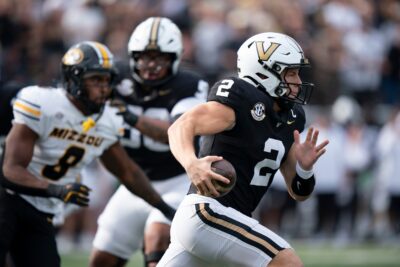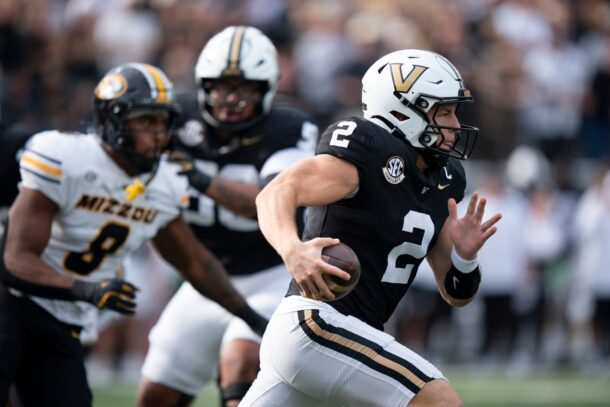
Is there a recipe Alabama can follow for beating Clemson? Sort of …
By Joe Cox
Published:
As Nick Saban leaves no stone unturned, we’re sure he’s put plenty of time into figuring out Clemson. The Tigers have lost two games over the past two seasons — one, obviously, to Alabama in last year’s championship game. So we’ll take a look back at those losses, and some of the Tigers’ close calls, and see what Saban has probably figured out from those games, and what Alabama might try to do to the Tigers.
The losses
2015 vs. Alabama (45-40): Alabama was outrushed and outpassed by Clemson, but played well offensively. The Tide picked up 13.4 yards per pass attempt and avoided any interceptions. The Tide committed just two penalties, didn’t turn the ball over, and recovered a crucial onside kick. Alabama’s DBs also helped, as they broke up seven Clemson passes and intercepted another, while the Tigers had just one pass break-up.
2016 vs. Pittsburgh (43-42): Clemson outgained Pitt by about 170 yards, but the Panthers had balance. Clemson rushed for just 52 yards (2.0 yards per carry), and while they passed for 580 yards, they threw three picks. Pitt rushed for 156, passed for 308, and had just one turnover. Pitt also scored four touchdowns in four red-zone trips, while Clemson came up empty on two trips. Pitt allowed only two sacks, and hit a crucial field goal to win the game.

Close calls
Clemson is coming off its most dominant performance of the season, a 31-0 thrashing of Ohio State, but its path to Tampa was anything but smooth. The Tigers played seven one-possession games this season, including the loss to Pitt, compared with just two in 2015.
2015 vs. Louisville (20-17): Louisville was terrible in the run game, but managed to pass well and pick off two Clemson passes. Another key was a 100-yard kick return score for UofL. Clemson’s punter also struggled in this one.
2015 vs. Notre Dame (24-22): It was a rainy day and Notre Dame held Watson to 84 passing yards, while throwing for 321 themselves. Notre Dame went -3 on turnovers and missed a two-point attempt to tie in the fourth quarter.
2016 vs. Auburn (19-13): Auburn hung in the season opener by limiting Clemson to under 400 yards, including just 3.4 yards per rush. Clemson had red-zone troubles, with just two touchdowns in four trips, including one empty trip. Watson ran 11 times but gained just 21 yards.
2016 vs. Troy (30-24): Troy slowed the Clemson ground game (3.8 yards per carry) and forced three turnovers. Watson threw two interceptions. Three of four Clemson red zone trips ended in field goals. Troy allowed just one sack.
2016 vs. Louisville (42-36): The Cardinals tried a shootout approach, and outgained Clemson 568-507. Louisville forced five turnovers, held the ball for 37 minutes, and forced two empty red zone trips for Clemson. The Cardinals were hurt by penalties and allowing five Clemson sacks (they had none). But Watson threw TD passes on Clemson’s final two drives to win the ACC’s game of the year.

2016 vs. N.C. State (24-17, OT): The Wolfpack stifled Clemson at times offensively, allowing just 3.0 yards per carry and forcing four turnovers. State forced two empty red-zone trips, but was done in by penalties on their end of things, as well as three missed field goals.
2016 vs. Florida State (37-34): Clemson trailed 28-20 heading into the fourth quarter at FSU before Watson rallied the Tigers yet again. The Seminoles were outgained 511-449 but held Clemson to 3.5 yards per carry. FSU ran the ball well, picking up 5.8 yards per carry, and also passed for 286 yards. Again, penalties helped Clemson hold off an upset, as FSU was flagged 13 times. It also allowed six QB sacks to Clemson.
2016 vs. Virginia Tech (42-35): The Hokies stayed in the ACC title game by passing for 284 yards. Clemson also punted the ball terribly.
What Alabama Can Learn
Basically, red-zone defense is pivotal. One common thread that ran through many of these games is that Clemson struggles when its offense bogs down inside the 20. Alabama allowed opponents only 21 red-zone attempts all season, but those attempts ended in touchdowns just eight times (nine more ended in made field goals). For comparison’s sake, Clemson allowed 21 touchdowns in 36 opposing red-zone trips.
The other big takeaway is that Clemson’s offense can be slowed by making it be one-dimensional.
Usually that means taking away the ground game, which, of course, Alabama is historically good at. Opponents held Clemson under 4 yards per carry five time — all five were close games, including its one loss.
Clemson finished under 248 passing yards just once, so the Tigers will hit some pass plays. But if Alabama keys on run defense, and turning red zone chances into field goals or empty trips, it’ll be a productive game for the Tide.
Joe Cox is a columnist for Saturday Down South. He has also written or assisted in writing five books, and his most recent, Almost Perfect (a study of baseball pitchers’ near-miss attempts at perfect games), is available on Amazon or at many local bookstores.







